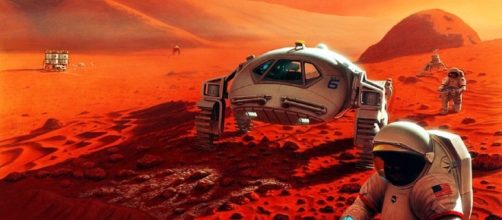For most of its history, NASA has used three types of power generation technologies to provide energy to its spacecraft. These technologies include solar panels, RTGs, which use the decay of plutonium fuel to provide heat to generate electricity, and hydrogen fuel cells, which convert hydrogen and oxygen into electricity and water using a catalyst. Now, according to NBC, the space agency is looking at nuclear fission to provide power for future spacecraft and surface bases on the moon and Mars.
A brief history of NASA space-based nuclear power
Back in the 1960s, when the money was flowing thanks to the Apollo program, NASA delved heavily into space nuclear power.
The first and only Nuclear Power Plant the space agency launched into space was called "SNAP-10A", which generated half a kilowatt of electricity for a month and a half in 1965 before succumbing to equipment failure. NASA also contemplated much larger nuclear plants that would power rockets that would send men to Mars. However, nuclear power in space went by the wayside when the post-Apollo drawdown occurred in the 1970s.
Why the revival?
If NASA is going to operate on the moon or Mars, it is going to need sources of power that are not going to be dependent on the sun, like solar panels, or the decay of plutonium, which diminishes power generation over time, like RTGs. The space agency has started a new program called "Kilopower," which envisions small-scale nuclear fission plants to power lunar bases or Mars habitats.
These mini-generators will produce about 10 kilowatts of electricity each, far less than the hundreds of megawatts that a typical Earth-based nuclear power plant produces. The idea is that as many of these mini-plants will be hooked up to a lunar base as needed to provide power for heat, lighting, and other needs.
How do the Kilopower plants work?
Like conventional nuclear power plants, these mini-generators work by splitting the fissionable material to generate heat which turns engines that create electricity. NASA estimates that a Mars expedition will need 40 kilowatts of electricity, enough to power eight suburban houses to operate. The generators can be launched cold and will only create radiation once they are hooked up and switched on.
How is NASA doing on space-based nuclear power?
A prototype of Kilopower that can generate a kilowatt of electricity is due to be tested in 2018. If the test is successful, the next step would probably be a full-scale generator attached to a probe, say to the inside of the permanently dark Shackleton crater on the moon.


